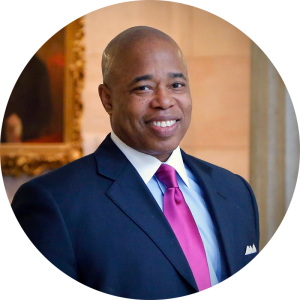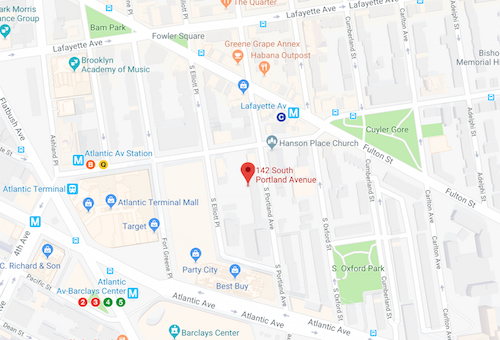Brooklyn Borough President Eric L. Adams yesterday recommended approval of a proposed 13-story mixed-use building with a 100 affordable housing units in Fort Greene as part of his groundbreaking Faith-Based Development Initiative.

Adams recommendations are part of the city’s Uniform Land Use Review Procedure (ULURP), in whcih borough presidents weigh in on projects requiring any kind of zoning variances or changes. The property rezoning in question is located along portions of Hanson Place, South Elliott Place, and South Portland Avenue at 142-150 South Portland Avenue.
Adams’ response was issued following months of dialogue with local stakeholders and community activists, highlighted by a public hearing he hosted at Brooklyn Borough Hall on Tuesday, February 20. Concurrently, he called for restricting the proposed rezoning to exclude any non-contextual development, in keeping with his administration’s standing policy and supporting the calls of Brooklyn Community Board 2 (CB 2).
“We can and must balance the benefits of creating 100 percent affordable housing in Fort Greene, in partnership with our faith-based community, with the responsibility of limiting rezoning efforts to sites that contextually fit with the neighborhood’s existing character,” said Adams. “Working out land use issues such as these in a publicly deliberative fashion are why the ULURP process matters.”
To ensure that this housing stock serves the long-term needs of the community and retains its current purpose as an affordable housing resource, Adams called for permanently affordable housing in the development. As part of his support for increasing the supply of family-oriented and senior housing units, his recommendations included expanding more of such units in the project.
In response to the city’s homelessness crisis, Adams envisioned that 10 percent of the rental apartments could be allocated for the city’s Department of Housing Preservation and Development (HPD)’s Our Space Initiative, which provides newly constructed affordable rental units to homeless individuals and families including those currently in the workforce.
Additionally, due to the public health and quality-of-life issues associated with a proliferation of rats in Fort Greene and nearby neighborhoods, as a result of recent construction, he urged the developers to create a rat mitigation strategy including, but not limited to, a robust baiting plan, rat-related enforcement measures, and other pest control efforts in and around the site.
Adams’ Faith-Based Development Initiative is a first-of-its-kind effort in the city in that it connects local houses of worship with information and resources to explore opportunities for developing their properties to create affordable housing and other community benefits. To date, his office has identified more than 2,700 tax lots across Brooklyn that are associated with houses of worship, with hundreds of those estimated to have corresponding property rights that may align with the initiative.
Adams has allocated $4 million from his capital budget to help construct several projects associated with this initiative, including Bethany Senior Homes, a 64-unit senior housing development in East Flatbush; Bishop Philius and Helen Nicolas Senior Residence, a 90-unit affordable housing development in East Flatbush focused on low-income seniors; Calvary Intergenerational, a 154-unit mixed-use affordable housing development in Crown Heights targeted to serve low-income seniors and families, and Ebenezer Plaza, a 481-unit mixed-use affordable housing development in Brownsville designated for low-income families.
Through the ULURP process, he has also helped to advance a 10-story, mixed-use residential building with 67 affordable housing units at 1860 Eastern Parkway in Ocean Hill.
Adams’ recommendations be accessed online by visiting brooklyn-usa.org/ulurp. They willalso be considered by the City Planning Commission (CPC) as part of their public meeting on Wednesday, April 11. After the CPC goes through the plans they may or may not make changes and then send it to the city council for a final vote on the project.






